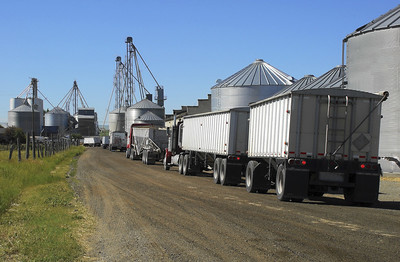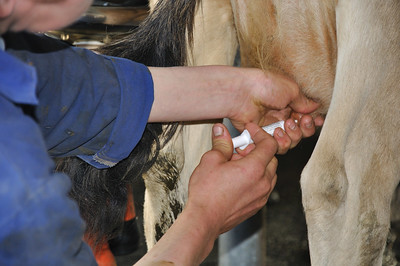



Calculating the economic effects of Romania’s bluetongue outbreak
Lost export opportunities can send long-term shockwaves in any industry, but it’s proven particularly difficult for Romania’s fledgling cattle sector.As part of a conference exploring global economic strategies, researchers from the Bucharest University of Economic Studies reviewed the economic impacts of Romania’s 2014 bluetongue outbreak. The researchers focused on the outbreak’s impact on country’s cattle sector.
.jpg)
Their analysis indicates that though the number of cattle deaths from bluetongue remained relatively small, the loss of export opportunities has had a sustained negative effect on Romania’s livestock industry. Since the sector was unable to export meat and dairy products during the outbreak due to biosecurity protocols, its growth stagnated. Reviving Romania’s livestock sector has been an ongoing challenge for both producers and policymakers.
A quick snapshot of Romania’s cattle industry
As it stands, cattle breeding is still a core component of subsistence farming in rural parts of Romania. Even though the country is rich in natural resources and has a strong history of animal husbandry, it hasn’t capitalised on its agriculture potential. This is especially true in its livestock sector. The country’s beef industry is fragmented between multiple small- and medium-sized processors.
After Romania joined the EU in 2007, its livestock industry was opened to trade and investment from its EU partners. Though this has paid dividends in the retail sector, questions remain about Romania’s production capacity.
Between 2007 and 2013, Romania’s cattle herd contracted by 32 percent. The beef industry has faced multiple health challenges – from BSE to bluetongue disease – and the 2013 horse meat scandal eroded consumer trust in Romania’s beef producers and processors.

Currently, Romania imports significantly more meat and dairy products than it exports. Based on production data, Romania’s livestock sector can’t meet the demands of its domestic population, despite the potential to do so.
The emergence of bluetongue
The 2014 bluetongue outbreak was first identified in August and appeared to be part of an epidemic that encompassed Southern Europe and Turkey. The first Romanian case was confirmed in the beginning of August and case numbers rapidly rose to 73 by the end of the month. Cases tended to occur on smallholder farms instead of commercial sites. By September, the disease had spread over a wide area and had infected over 400 animals.
Since the weather conditions supported the growth of C obsoletus and C pulicaris, the midges that spread bluetongue, prevention and vaccination efforts were ramped up.
Though the number of cases and animal deaths remained relatively low, state epidemiologists felt that the majority of Romania’s cattle herd was susceptible to infection. Since farmers couldn’t effectively prevent midges from biting and transmitting the virus between cattle, the epidemic couldn’t be completely controlled.
The Romanian authorities relied on EU resources and provided training and information sessions with vets, cattle industry groups and animal transport companies. The training covered how to prevent the spread of bluetongue and how to treat sick cattle. Restricting cattle movements in areas with confirmed cases was one of the key strategies to slow bluetongue’s progression.
The official response – and the economic fallout
As part of the official response, the Romanian government compensated farmers who lost cattle to bluetongue. The researchers estimate that the government paid farmers between €700 and €800 per cow (depending on the breed and value of the animal). The government also provided financial compensation to producers who vaccinated their herds. According to budget data, Romania spent approximately €700,000 combatting the 2014 outbreak.

The long-term economic effects of the bluetongue outbreak are harder to calculate than the state’s net expenditure. Since the disease causes mortality, spontaneous abortions, weight loss and loss of milk and meat yield, its impacts on production are more difficult to estimate.
Though vaccination and biosecurity kept Romania’s case numbers low, they created barriers for the fledgling processing and export sectors. The strict biosecurity protocols meant that cattle susceptible to infection couldn’t be moved to finishing lots or processing plants within Romania. It also meant that live cattle couldn’t be sold to foreign markets.
The emphasis on vaccination meant that many exporters feared animals could test seropositive, eroding their market value. Though the prevention efforts were necessary, they hobbled the export sector. It’s been difficult for this segment of the industry to regain its footing.
The researchers feel that the jury is still out on what the long-term effects of the outbreak will be. Since Romania’s cattle sector was coming out of a long period of decline, disease challenges of any kind pose a significant threat. The potential trade restrictions associated with notifiable diseases put the country’s sector at risk as well.
The rapid spread of bluetongue demonstrates the fragility of Romania’s cattle sector – it will take significant national and EU investment to capitalise on its potential.


